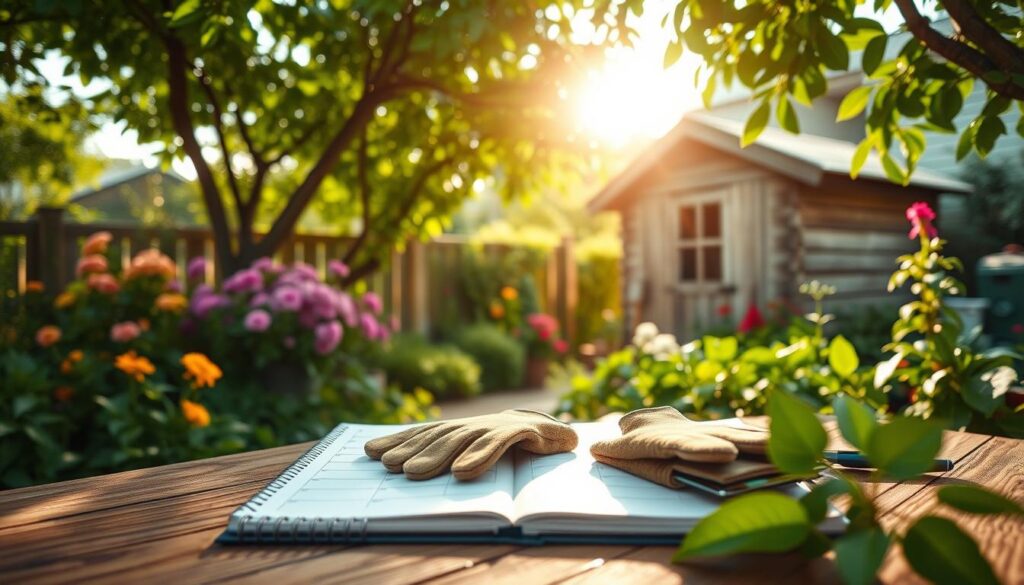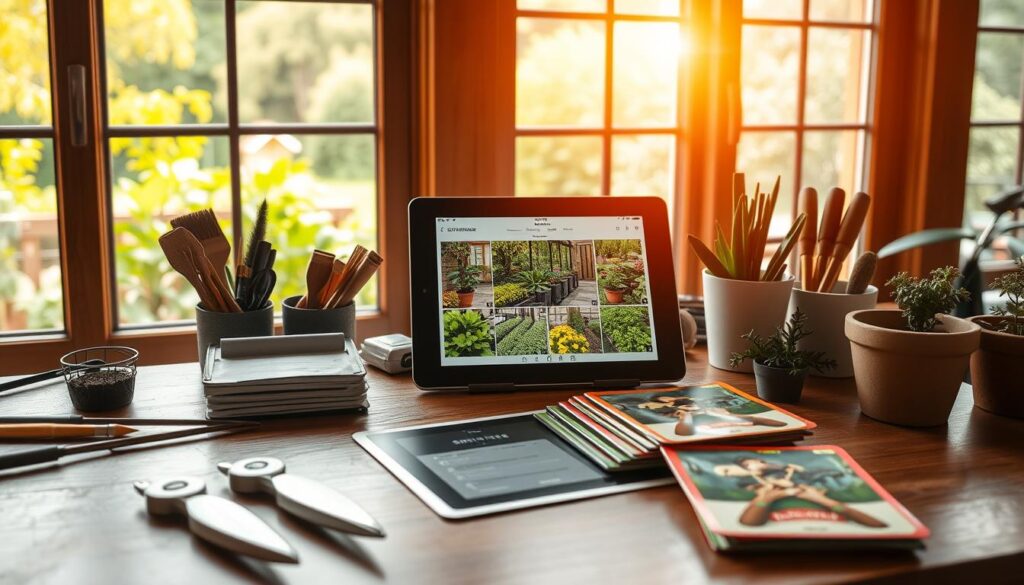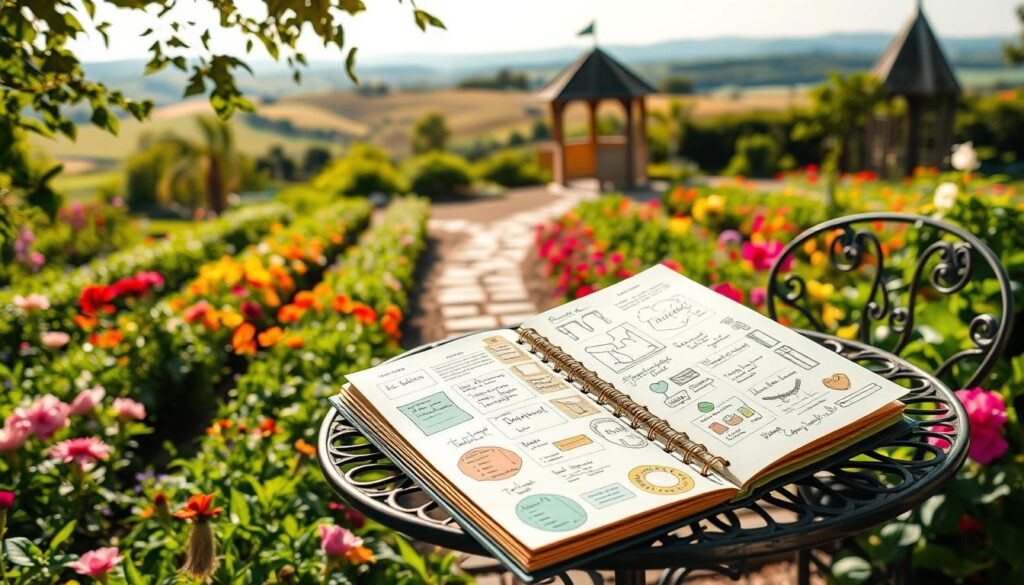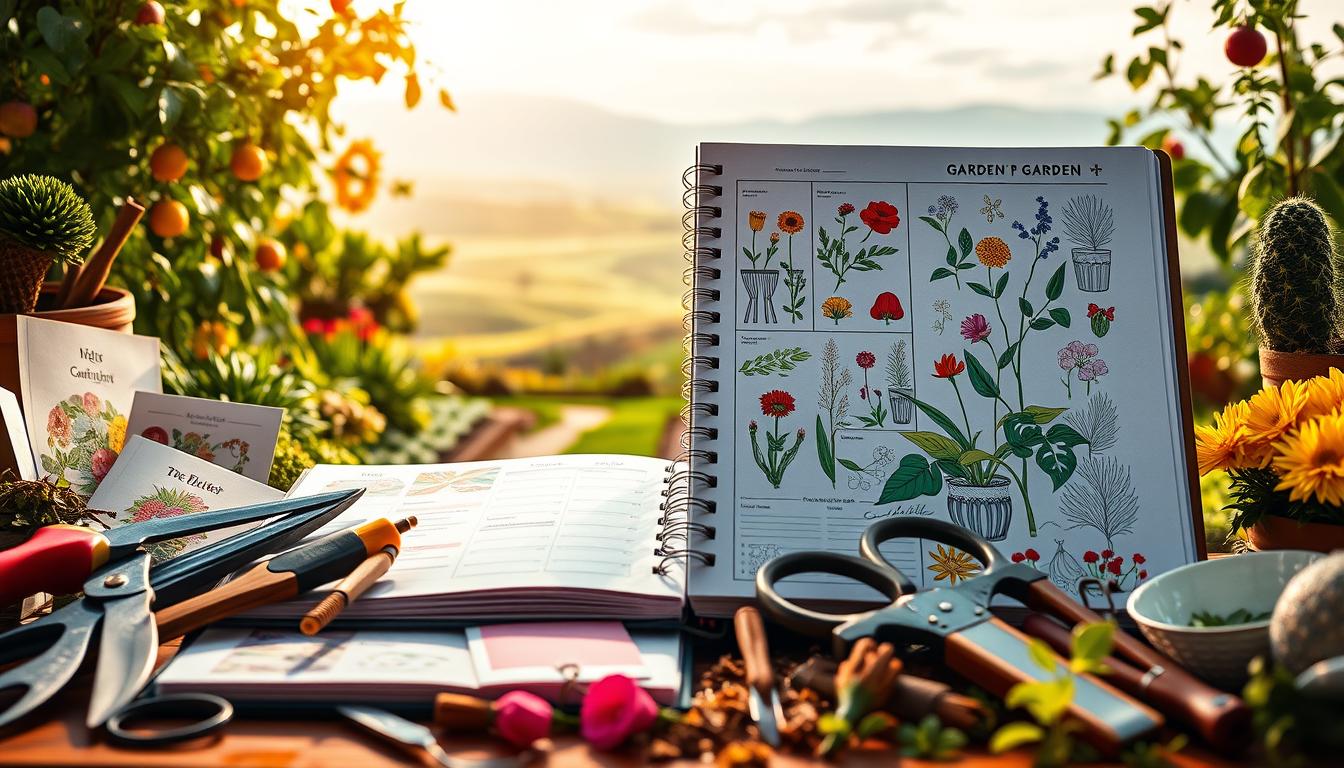Keeping your outdoor space organized can feel overwhelming, but it doesn’t have to be. A 38-page planner is here to simplify the process. Designed to fit standard 8.5×11 binders, this tool adapts to your needs as your space evolves over time.
The binder format allows you to add or remove pages as your layout changes. Whether you’re planning for spring blooms or fall harvests, this reusable system grows with you. Plus, it’s compatible with premium paper options like linen-textured stock for a polished look.
For those who love creativity, the planner includes 8×4 bed layouts and artistic templates. These features make it easy to visualize your design while keeping everything on track. Many users have found it invaluable, with some relying on it for multiple growing seasons.
Key Takeaways
- 38-page format fits standard 8.5×11 binders for easy organization.
- Reusable pages adapt to your evolving outdoor space.
- Compatible with premium paper options for a professional feel.
- Includes creative templates for bed layouts and visual planning.
- Designed to last through multiple growing seasons.
Why You Need a Printable Garden Planner
A well-structured approach can make gardening more enjoyable and efficient. Whether you’re a seasoned gardener or just starting, having a clear plan can save you time and effort. It’s not just about planting seeds; it’s about creating a system that works for you and your family.

Benefits of Using a Garden Planner
Using a garden planner offers numerous advantages. It helps reduce decision fatigue by providing dedicated tracking for over 12 plant varieties and 6 bed layouts. This ensures you never overcrowd your beds or forget what you’ve planted.
One of the most significant benefits is the ability to prevent common mistakes. Studies show that 73% of gardeners report better yields when they use written plans. It’s a simple way to stay organized and maximize your harvest.
Gardening also has mental health benefits. As one expert noted,
“Gardening challenges patience and delays gratification, teaching us to appreciate the process.”
A planner can make this process even more rewarding.
How It Simplifies Garden Organization
A garden planner transforms the way you approach your outdoor space. It allows you to create detailed layouts for your beds, ensuring everything has its place. Square-foot gardening templates are particularly helpful for optimizing space.
Winter planning can turn the cold months into a productive time. Many families spend snowy weekends coloring layouts and discussing their next season’s goals. This not only builds excitement but also strengthens family bonds.
Another advantage is the ability to create legacy records. You can easily compare past harvests, like the 2022 vs. 2023 pepper yields, at a glance. This helps you learn from previous seasons and improve over time.
- Reduce decision fatigue with dedicated tracking for plant varieties and bed layouts.
- Prevent overcrowding using square-foot gardening templates.
- Transform winter blues into productive planning sessions.
- Avoid common mistakes and improve yields with written plans.
- Create legacy records to track progress and learn from past seasons.
Getting Started with Your Printable Garden Planner
Starting your gardening journey with a structured tool can make all the difference. Whether you’re a beginner or a seasoned pro, having a clear system in place ensures you stay organized and focused. Let’s walk through the steps to set up your planner for success.

Downloading and Printing Your Planner
First, download your planner and ensure you have the right tools for printing. Use 32lb premium paper for a durable writing surface that won’t smudge. If you’re printing duplex (double-sided), Epson EcoTank printers are a great choice for crisp, clean results.
Hole-punch margins are included, making it easy to add pages to your binder. For added protection, consider using Avery 73601 clear sheet protectors. These are perfect for keeping your pages safe from dirt and moisture.
Setting Up Your Garden Binder
Customizing your binder is where the fun begins. Start by organizing sections with labeled tabs. One user shared, “I label mine Seeds/Calendar/Pest Control.” This keeps everything accessible and easy to find.
Curate your binder with helpful additions like USDA zone maps and pages from the Baker Creek seed catalog. These resources provide valuable details for planning your space. Don’t forget to snap photos of your drawn layouts and save them in digital notes for quick reference.
- Use 32lb premium paper for a professional finish.
- Print duplex on Epson EcoTank printers for smudge-free results.
- Protect pages with Avery 73601 clear sheet protectors.
- Label tabs for easy navigation (e.g., Seeds/Calendar/Pest Control).
- Add USDA zone maps and seed catalog pages for extra guidance.
For more tips on starting your gardening journey, check out this beginner’s guide. With these steps, you’ll have a planner that’s both functional and tailored to your needs.
How to Use Your Printable Garden Planner Effectively
Maximizing your outdoor space starts with a clear plan. Whether you’re growing vegetables or flowers, staying organized ensures your plants thrive. Let’s explore how to make the most of your planning system.

Tracking Seed Varieties and Planting Dates
Keeping track of your seeds is essential for a successful harvest. Use your planner to note planting dates and growth timelines. For example, Brandywine tomatoes need 85 days from transplant to harvest.
Consider moon phase planting tips for optimal growth. Many gardeners swear by planting during the waxing moon for better results. This simple trick can make a big difference.
- Use washable markers to code entries (green for spring, orange for fall).
- Create a companion planting chart—basil and tomatoes increase yields by 23%.
- Leave blank spaces in your frost date calculator to update annually.
Planning Garden Beds and Layouts
Designing your beds ensures every plant has enough space to grow. Use square-foot gardening templates to optimize your layout. This method prevents overcrowding and maximizes your harvest.
Include crop rotation examples to maintain soil health. For instance, follow tomatoes with beans to replenish nitrogen. This practice keeps your beds productive year after year.
| Plant | Companion | Benefit |
|---|---|---|
| Tomatoes | Marigolds | Deter nematodes |
| Basil | Tomatoes | Increase yields |
| Beans | Corn | Provide natural support |
Scheduling Seasonal Tasks
Stay on top of your tasks with a seasonal schedule. From pruning to pest control, having a plan ensures nothing gets overlooked. Add a pest management section with neem oil recipe cards for easy reference.
Track your harvest with columns for weight, taste rating, and preservation methods. This helps you identify which plants perform best and refine your approach next season.
- Prune fruit trees in late winter for healthier growth.
- Plant cover crops in fall to protect soil during winter.
- Harvest herbs in the morning for maximum flavor.
Creative Ways to Enhance Your Printable Garden Planner
Adding artistic touches to your planning system can turn it into a keepsake you’ll treasure for years. Personalizing your pages not only makes them more functional but also adds a unique charm. Here are some creative ideas to elevate your planning experience.

Adding Stickers and Washi Tape
Stickers and washi tape are simple yet effective ways to add personality to your pages. Azure Farm, for example, uses floral washi tapes to highlight important dates and tasks. Themed sticker sets, like heirloom veggie icons or pollinator buddies, can make tracking plants more fun.
One gardener shared, “I add weather notes with glitter pens to make them stand out.” This small touch can turn a routine task into a creative moment. Stickers and tapes also make it easy to update layouts without starting over.
Incorporating Artistic Elements
Artistic elements can transform your planner into a work of art. Watercolor templates, for instance, can double as wall decor. Frame your May layout with dried pressed flowers for a beautiful keepsake.
Hybrid planning is another great option. Scan your pages to create time-lapse videos of your progress. This not only documents your journey but also inspires others in planner swap groups.
| Creative Tool | Use |
|---|---|
| Washi Tape | Highlight tasks and dates |
| Stickers | Track plant varieties and milestones |
| Glitter Pens | Add a personal touch to notes |
| Watercolor Templates | Turn pages into wall art |
Joining planner swap groups is a great way to share custom templates and ideas. This community aspect adds a social dimension to your planning process. With these creative enhancements, your planner becomes more than just a tool—it’s a reflection of your style and passion.
Conclusion
Transforming your outdoor space into a thriving haven is easier than you think. With the right tools, you can turn chaotic plots into pantry-ready abundance in just one year. Start today by downloading your planner to catch winter seed sales and prepare for the next season.
Take inspiration from Julie, who increased her harvest by 140% using these trackers. Her story proves that a little planning goes a long way. Plus, your planner can become a cherished family heirloom, just like one gardener’s 1998 version that’s still treasured today.
Tag @azurefarm to share your layouts and connect with a community of passionate growers. For more tips, check out our soil prep posts to ensure your garden thrives. Start your legacy today—freeze a sprig of basil on page 1 and watch your journey unfold!

